How to watch a meteor shower and photograph it with your iPhone
Have you ever seen a shooting star? It’s quite a spectacle, seeing a little piece of dust or rock burning a line across the night sky.
If you’d like to see shooting stars (or perhaps even a much more impressive fireball!) without waiting for hours and hours, what you need is a meteor shower.
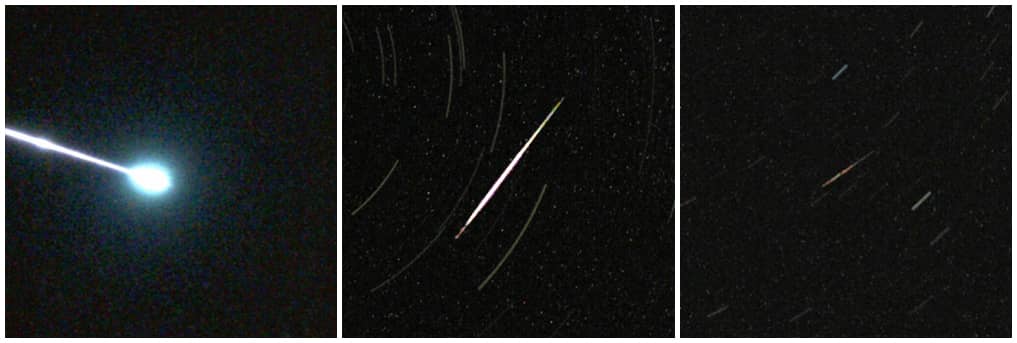
Left: A large, bright fireball. Center: A bright shooting star. Right: A common shooting star.
While you’re at it, why not take an amazing photo? With NightCap Camera you can photograph a meteor shower using your iPhone!
What is a meteor shower?
Meteor showers happen when a comet (or sometimes an asteroid) crosses the earth’s orbit around the sun. They leave behind a trail of dust and small bits of ice and rock, and each time the earth passes through this trail lots of these bits burn up in our atmosphere. Each time it happens, we see a shooting star.
When to see a meteor shower
There are many meteor showers throughout the year. There’s an excellent guide to viewing meteor showers including a good timetable at Meteorwatch.
What to expect
It depends on a few things, but 5-6 meteors per hour is a reasonable minimum to expect, if you’re lucky you’ll see a lot more. Some will be small streaks of light across the sky, a few will be big with flashes of light, and if you’re lucky you’ll see a fireball!
Most meteors appear as a quick streak across the sky. They normally last a second or two as they’re going extremely fast. Bigger meteors last longer and are brighter, and if you’re lucky to see a big fireball it can last much longer, light up the whole sky, and visibly break up high in the atmosphere.
A few things can have an impact on the experience:
- Clouds will block your view. If it’s really cloudy, you’ll see nothing at all. Wait for a clear sky.
- The moon! A full moon is really bright, it ruins your night vision and lights up the sky making it hard to see fainter shooting stars. The Meteorwatch meteor shower calendar shows how bright the moon will be.
- Light pollution limits what you can see. As a rule, the more stars you can see, the more meteors you’ll see too. Search online for your nearest dark sky site!
Watching a meteor shower
First, find a dark area away from bright lights. The darker it is, the more your eyes will open up, the better your night vision will get, and the more meteors you will see. You want somewhere with a clear view of the sky, so an open field or park is good.
Then, lie down on the ground (or on a camping bed, reclining chair etc.), look up, and wait.
Equipment to take
- Something to lie on (a picnic mat, camping bed, beach towel – whatever suits your location)
- A tripod with an iPhone or smartphone adaptor, or some way to keep the iPhone still
- The NightCap Camera app
- If it’s going to be cold, warm clothes (or a sleeping bag) and a hot drink
Taking photos with your iPhone
Capturing shooting stars with an iPhone is easy if you use the NightCap Camera app. Here’s the process:
- Use a tripod, or some other method or holding your iPhone still. This is essential!
- Turn on Meteor Mode. Tap the
 button to open the camera options, then tap
button to open the camera options, then tap  to turn on Meteor Mode (the dot under it will turn green). Meteor Mode sets everything up for you, so you don’t need to change any camera settings or set the focus.
to turn on Meteor Mode (the dot under it will turn green). Meteor Mode sets everything up for you, so you don’t need to change any camera settings or set the focus. - Point the iPhone at a clear patch of sky and tap the shutter button to start taking photos, and wait. The longer you wait, the more likely you are to capture a shooting star.
Meteor Mode automatically takes photos (approximately 720 per hour with a 5 second exposure time), then scans them and only saves photos it thinks might contain a meteor. The number of photos it saves depends on many factors – clear skies are ideal, busy skies with lots of planes or trees blocking the view will result in more photos being saved. It generally saves between 30 and 200 per hour.
During capturing you’ll see “Capturing… (4/20)” at the top of the screen. The two numbers are the number of photos saved, and the total number taken (in this case 20 photos taken, 4 saved to the camera roll).
Simply tap the shutter button again to finish capturing, and then look through your photos to see what it caught!
Meteor, plane or satellite?
They’re easy to tell apart when you’re watching. Planes move slowly, and have flashing lights. Satellites move slowly but don’t flash (they look like a moving star). Meteors are fast and short lived.
It’s tougher in photos though. Here are some examples so you know what to look for:

A plane at low altitude. The flashing lights on the wings paint dashed lines making it easy to spot.

A plane at high altitude. You can see the dashed line again, due to the flashing lights.
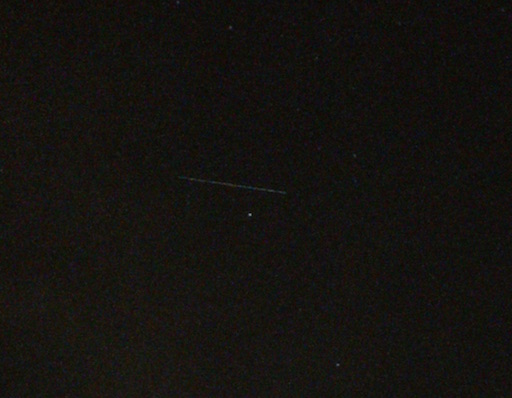
A faint satellite can look like a meteor, but notice how the brightness is similar all the way along – it doesn’t have a clear ‘head’ or ‘tail’ end.
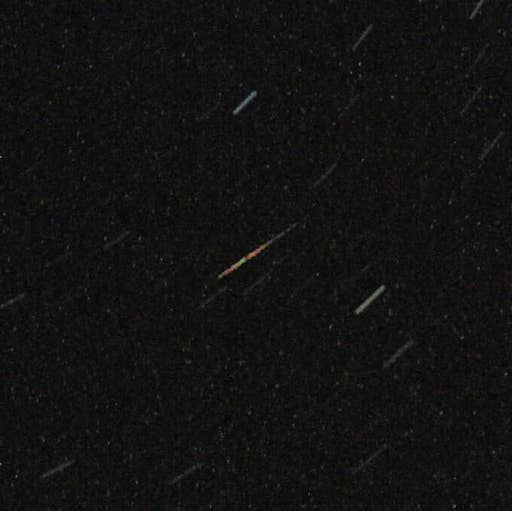
A small meteor. The very short streak with a bright head and a fainter tail give it away.
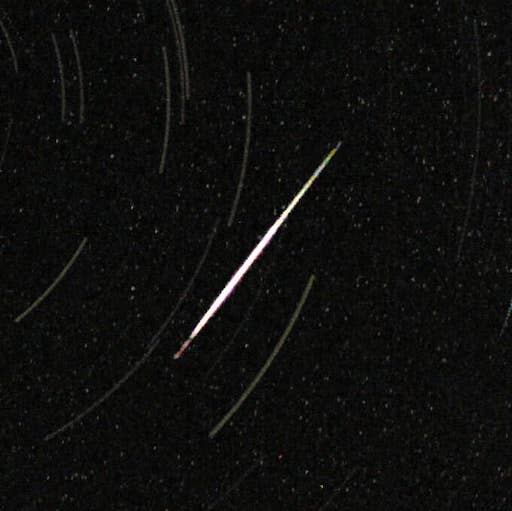
A meteor. Again, it’s clearly brighter at one end, with a tail that fades away.
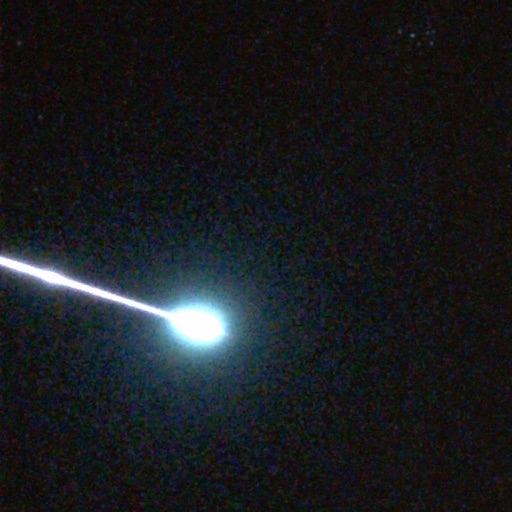
This is a fireball – a really big meteor. They leave a big, bright tail and often end with a big flash as they break up.
You need to be lucky to see a fireball like that last photo, but the longer you leave the camera running, the more likely you are to get lucky!
If you see a meteor and it doesn’t appear in the photo, there can be a few reasons for this. Most commonly the meteor is just out of the camera’s view, or isn’t quite bright enough for the camera to see. Sometimes it can appear just after NightCap has finished taking one photo and before it’s started the next – the gap between shots is very small, but meteors are very fast!
See our Night Sky iPhone Photography tutorial to learn how to photograph the International Space Station (ISS) and more!
If you catch any shooting stars with NightCap and you’d like to share them with us please let us know! You can email us at support@nightcapcamera.com or find us on twitter as @nightcapapp.
If you’d like to link to this article, or quote from it, please feel free. If you’d like to reproduce the whole article on your own website or blog, we’re generally fine with that but please let us know first.
Not got NightCap Camera yet?